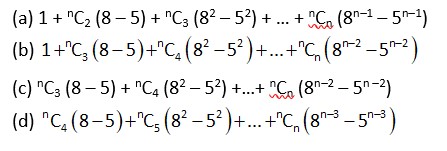Maths
Get insights from 6.5k questions on Maths, answered by students, alumni, and experts. You may also ask and answer any question you like about Maths
Follow Ask QuestionQuestions
Discussions
Active Users
Followers
New answer posted
2 months agoContributor-Level 10
Given a > b
Area common to x2 + y2
is
Similarly
Equation (i) and equation (ii)
Equation (i) + equation (ii)
a2 = 75, b2 = 27
New answer posted
2 months agoContributor-Level 10
sin x = 1 – sin2 x
=> sin x =
draw y = sin x
y = find their pt. of intersection.
New answer posted
2 months agoContributor-Level 9
so vectors
are coplanar, hence their Scalar triple product will be zero.
New answer posted
2 months agoContributor-Level 10
First common term to both AP's is 9
t78 of
t59 of
nth common term
9 + (n – 1) 12 234
n <
Now sum of 19 terms with a = 9, d = 12
New answer posted
2 months agoContributor-Level 10
Variance =
Let 2a2 – a + 1 = 5x
D = 1 – 4 (2) (1 – 5n)
= 40n – 7, which is not
As each square form is
Taking an Exam? Selecting a College?
Get authentic answers from experts, students and alumni that you won't find anywhere else
Sign Up on ShikshaOn Shiksha, get access to
- 65k Colleges
- 1.2k Exams
- 679k Reviews
- 1800k Answers

